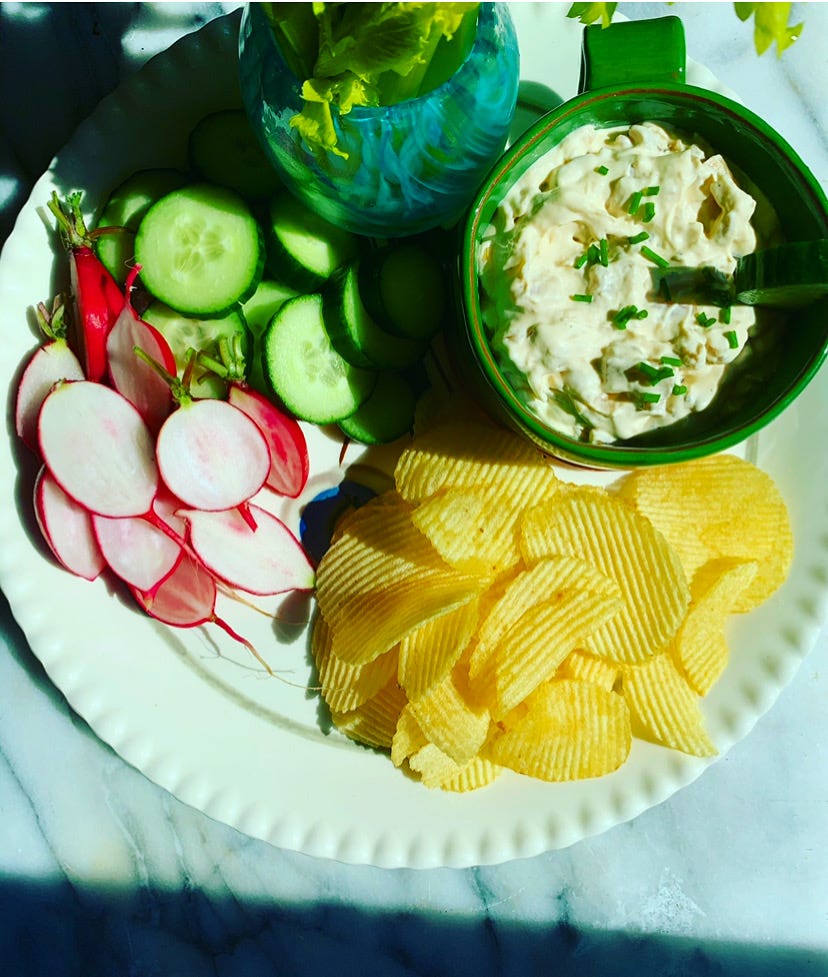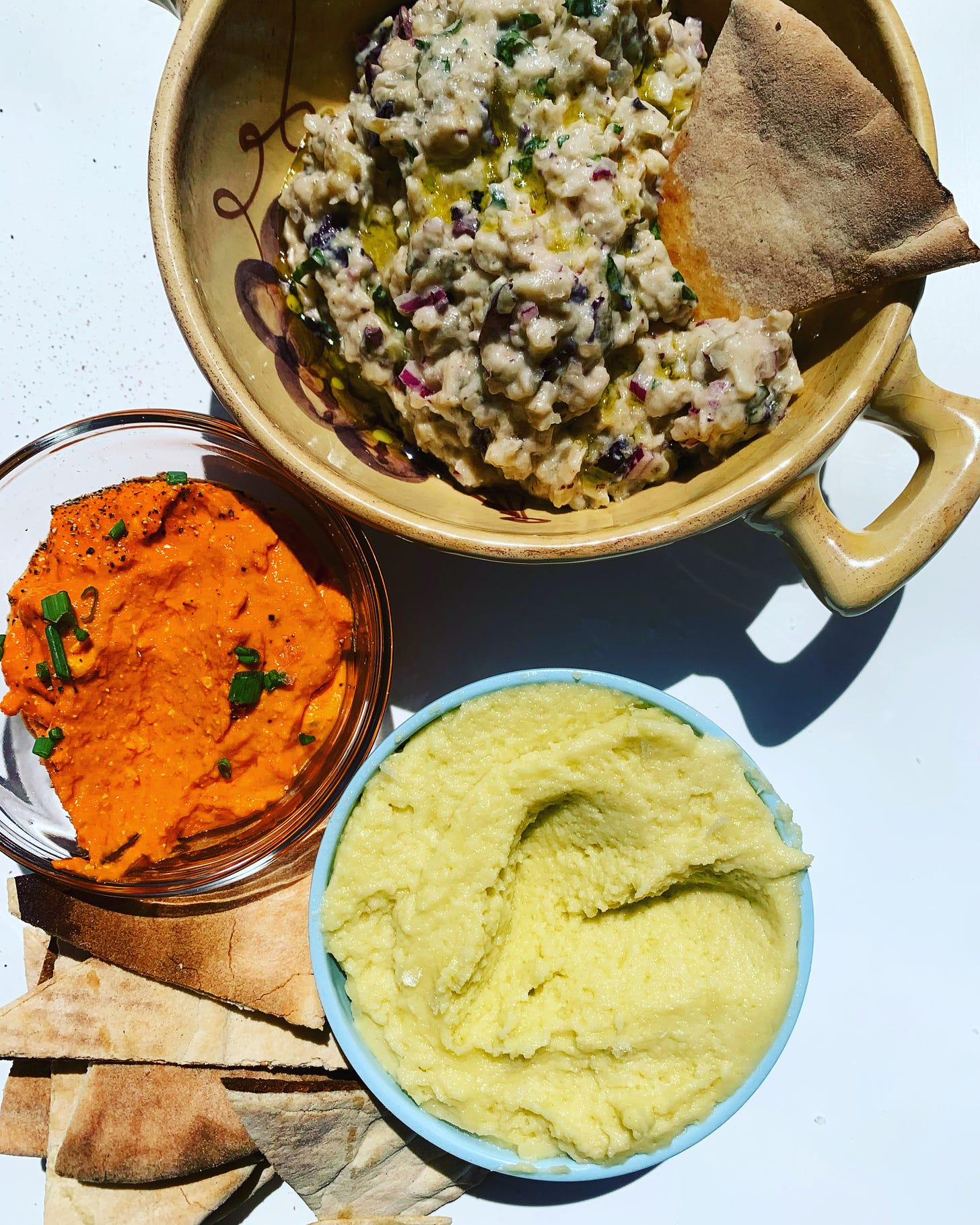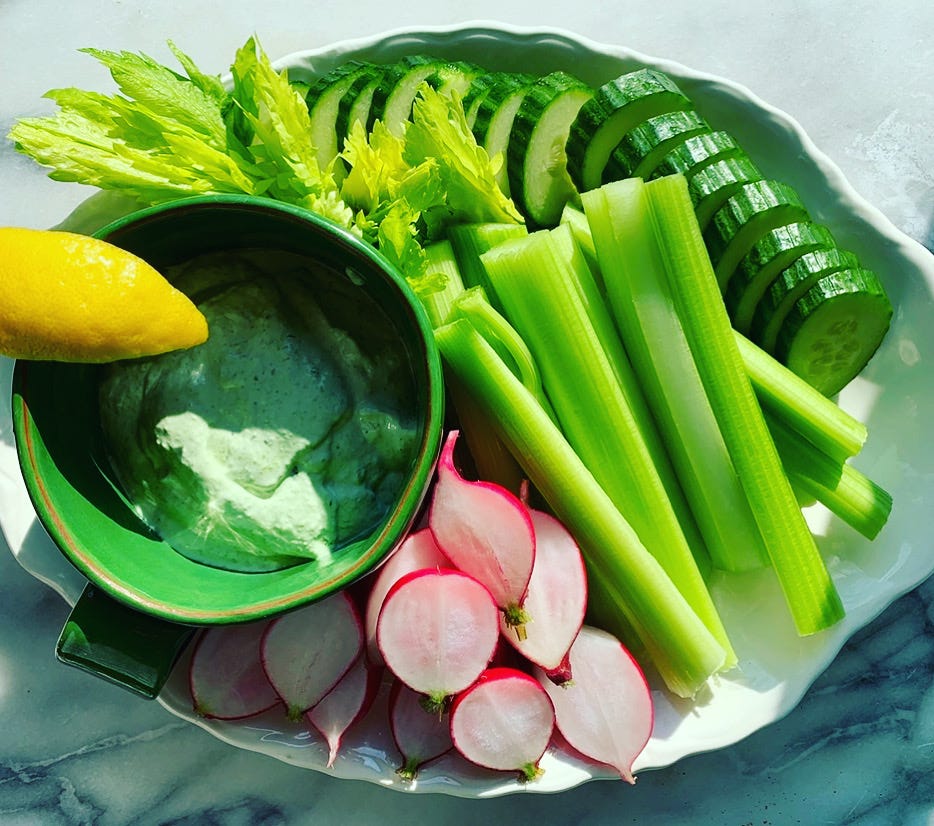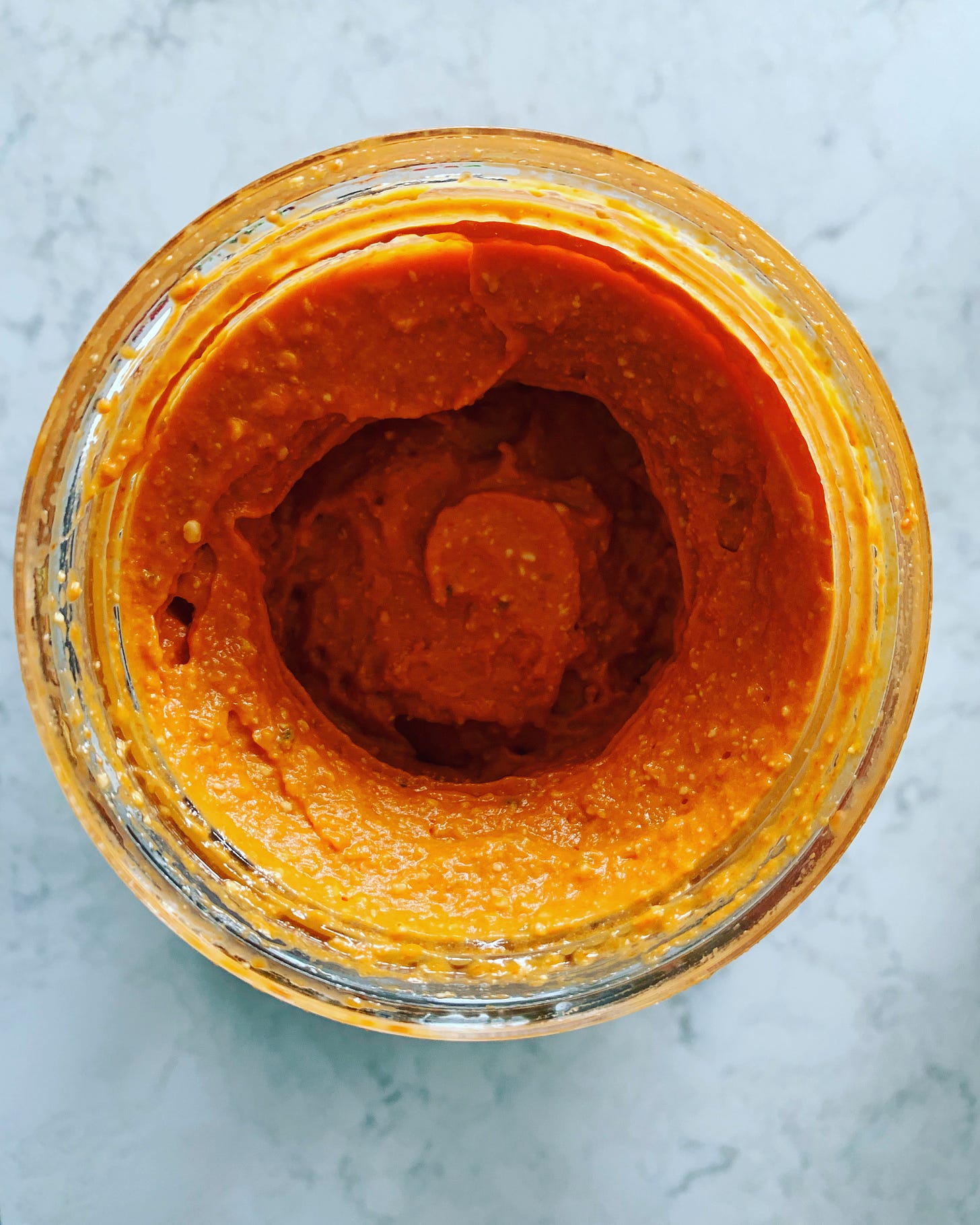HAVE WE TALKED ABOUT DIP ENOUGH? I don’t think so. I love it. In fact, the Department of Salad could easily have turned out to be the Department of Dip, since both dishes lit up my life during that first summer of the pandemic, when everything seemed to turn a bit dark and zoomed to a freakish, sudden halt.
All the reassuring pre-pandemic rituals we’d blindly relied on to tell us that we were conducting a “normal” life—taking all the kids to all the schools, going to all the offices, grocery shopping, socializing, getting out of bed, washing our hair, knowing what day of the week it was—went missing. So a lot of us invented new ones for ourselves. Mine, apparently, was extending hospitality to myself.
I’d spend way too much time building a giant, beautifully arranged salad at lunch, which no one would see but me. And then, at the time of day when most people were probably having their first pandemic cocktail—2:30 p.m.; just kidding—I would occasionally make a delicious dip of some sort. Or two. “It’s Dip Hour!” I would yell, to no one. And that would be dinner.

In terms of frequency, my salad-making rate was much higher, but Dip Hour felt very festive and a little racy, to me—and also kind of pitiful. Who makes an entire dip tray for themselves? Emily Nunn.
Maybe I was asserting my right to personal dignity, even though I wasn’t having people over to be dignified in front of. Putting a little something out is, after all, is what separates us from animals.
I was clearly born too late, because in mid-century America dip was hip and you had to own a Chip & Dip.
Which is probably why I’d long believed that the rise of dip in America came at the same time, in the early fifties. That’s when the Kraft Music Hall radio show presented a recipe for clam dip that caused a canned clam shortage on the East Coast and a California housewife mixed Lipton onion soup mix into sour cream and caused another craze on the West Coast.
But according to the Food Timeline, dips, both hot and cold, were popular much earlier, presumably as a result of the Great Depression, when people who still wanted to entertain had less to offer. Vegetables and crackers and such present-day outliers as cod balls, “tuna fish cones,” and frankfurters were considered the “dip”; the condiment or sauce or spread that accompanied them was called the “dunk.” Plus, there’s evidence of clam dip being consumed much earlier than believed, by the friends of Mrs. Woodrow Wilson, whose recipe was found on the back of a bridge-club score card.

Dip was still big when I was a kid in the 70s, a party treat that was almost always sour-cream based, and therefore the perfect cold, sweet foil for salty ruffled potato chips. You either made it at home with the onion soup mix or bought the expensive pre-made stuff at the grocer, located next to the sour cream.
This was always what dip was to me, something from the dairy case, and it was really good, especially the clam dip, which no one makes any more. What a shame. And what a shame also that I grew up not really understanding how limited my dip exposure was. I hardly knew dip at all.
But—here comes the point of all this—I also realized recently that I tend to think of dip as American, as evidenced by the kinds of dips I’ve talked about here before (try my Green Goddess dip, which converts into a salad dressing; dreamy).
Of course it’s just my idea of dip that is American. Many countries and cultures have their own versions of dip (and dumplings and barbecue—and salad!), and they got around to them long before Mrs. Woodrow Wilson combined clams and cream cheese.
But a personal shift came recently when I was with my small running group (it’s just me, my cousin Toni, and our friend Elizabeth), as we were starting the second mile, and talking about dip, as one does.
If Elizabeth, who is Greek, had not mentioned her favorite Greek dips and spreads, you’d be getting my clam dip right now. But from the minute she began describing how she makes her favorite red pepper dip and melitzanosalata for her family, it’s been all I could think about. Clam dip who?
So I spent this week immersing myself in the joyously big, strong, bright flavors of the three dip/spread recipes I have for you today. They’re a perfect example of how Greek cuisine, redolent of olive oil and garlic and herbs, refuses to lull us, insists on waking us up. They’re much better for carrying us into spring than heavy creamy clam dip.
And like a Greek salad, these dips let you sample many flavors without having to commit to an entree. I don’t even know why we must have entrees. They’re tyrannical.
Elizabeth pointed out that we’re in the last week of Greek-American Heritage Month, also known as Hellenic Heritage month, so the timing and the warmer weather seem perfect for these recipes. In addition to those Elizabeth sent me, from one of her favorite cookbooks, Modern Greek Cooking, by the Atlanta chef Pano Karatassos, I also adapted dips from The Olive and the Caper, by Susanna Hoffman, which we explored in an earlier issue with my friend Mary Norris, who is also the author of two wonderful books (Greek to Me and Between You and Me). If you feel like you absolutely must have a salad today, you really won’t find a more perfect Greek salad than the one Mary gave me back then.






